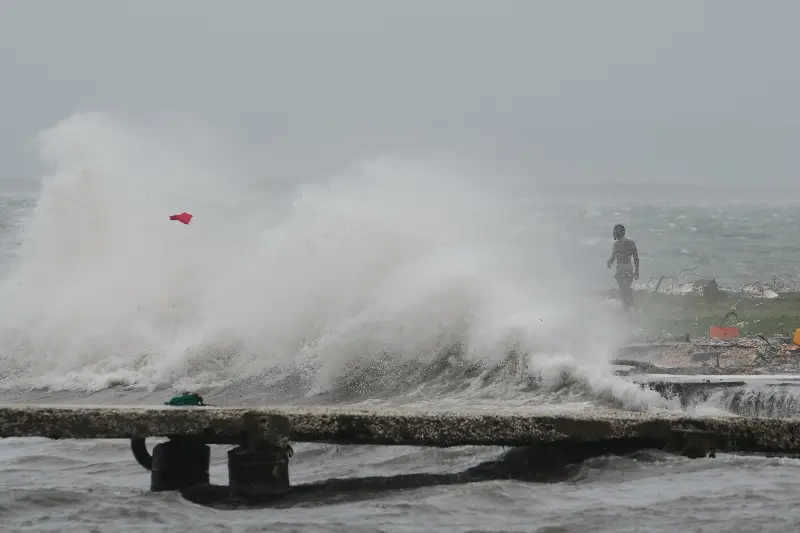
Hurricane Melissa directly hit Jamaica on Tuesday as a catastrophic Category 5 storm, making history as the most powerful hurricane ever to strike the island.
The wind speeds were so extreme that NOAA’s Hurricane Hunters were forced to abandon their mission early due to severe turbulence before Melissa even made landfall. It rapidly intensified to become the strongest storm on Earth in 2025.
So just how powerful was Melissa, what was its impact on Jamaica, Haiti and Cuba, and how does it stack up against other historic hurricanes?
Jamaica
Hurricane Melissa approached the island nation with sustained winds of 185 mph. Ahead of landfall, Minister Desmond McKenzie warned residents that it was “not the time to be brave.” The International Federation of the Red Cross estimated that as many as 1.5 million Jamaicans (more than half the population) could be directly affected by the storm’s path.
The storm killed at least seven people in the Caribbean before making landfall. In Jamaica, three others died during preparations and 13 were injured as residents rushed to brace for what officials described as the worst storm in the nation’s history, Health Minister Christopher Tufton said Monday. Forecasters warned of storm surges of 10 to 13 feet along Jamaica’s coasts and rainfall totaling 15 to 30 inches. More than 25,000 people took shelter during the storm.
Melissa made landfall in Jamaica’s St. Elizabeth Parish on the island’s southwest coast. Damage to key infrastructure was evident early, as winds tore the roof off a building at Savanna La Mar Public General Hospital. New video also showed extensive damage to the police station in Black River, in western Jamaica. Jamaican Prime Minister Andrew Holness told BBC news that the town of Black River was “totally destroyed”.
Another video shows damage at Sangster International Airport in Montego Bay, where floodwaters caused sections of the roof to collapse as the filmer walked through the waterlogged terminal. Sangster is Jamaica’s busiest airport, handling tens of thousands of passengers each day.
More than 530,000 Jamaicans—over 77% of the nation’s power customers—were without electricity, said Minister Desmond McKenzie of the prime minister’s office. About 25,000 tourists also remained in the country as Jamaica began to emerge from the storm.
Prime Minister Andrew Holness said Tuesday that Jamaica had been “ravaged” by Hurricane Melissa but vowed the country “will rebuild, and we will do so even better than before.” As of Oct. 30, officials reported eight deaths in Jamaica though the toll could rise. In western Jamaica, a baby was killed when a tree fell on a home, according to the Associated Press.
Haiti, Cuba
Passing near Haiti, Hurricane Melissa unleashed catastrophic rainfall and flooding that caused rivers to overflow, killing 25 people as of Wednesday. Steven Aristil of Haiti’s Civil Protection Agency told the Associated Press the toll could rise as rescue and recovery teams continue their work.
In Petit-Goâve, a coastal town in southern Haiti, the mayor said dozens of homes collapsed after a river burst its banks, trapping residents under debris. More than 11,600 people remained in shelters because of the storm, according to CBS News.
Melissa made landfall in Cuba’s Santiago de Cuba province as a Category 3 hurricane, bringing winds of up to 120 mph and as much as 25 inches of rain in some areas, officials said. Rising rivers left more than 140,000 residents isolated, and over 200 communities cut off with blocked roads reported north of the landfall zone. Authorities said about 735,000 people remained in shelters and warned that the storm could deepen the island’s ongoing economic crisis.
How Melissa Compares
Melissa, dubbed Jamaica’s “storm of the century” by the World Meteorological Organization, quickly surpassed Hurricane Gilbert, which struck the island in 1988 with winds of 130 mph. Gilbert devastated Jamaica, killing 45 people and causing an estimated $700 million in damage.
Melissa appears tied for the strongest landfall on record, alongside Hurricane Dorian, which struck the Bahamas in 2019 with winds of 185 mph, and the 1935 Labor Day hurricane, which hit the Florida Keys with the same force. The Labor Day storm killed more than 400 people, while Dorian left 74 dead. Hurricane Wilma also reached 185 mph at its peak in 2005, though it weakened before landfall.
Melissa is comparable to the strongest Atlantic hurricane in history, Hurricane Allen in 1980, which reached 190 mph.
This Atlantic hurricane season alone is breaking records. 2025 marks the first time in 20 years that three Category 5 hurricanes have formed, with Melissa following Hurricane Erin and Hurricane Humberto. It is also the fourth consecutive season in which at least one Category 5 storm has developed in the Atlantic.
There is no doubt Hurricane Melissa proved to be a catastrophic force this season. As nations reel from the storm and officials continue to assess the devastation, President Donald Trump announced Wednesday that his administration was “prepared to move” on sending humanitarian aid to Jamaica, where the damage was severe. The Jamaican government launched a centralized website to coordinate relief, providing real-time updates.
Hurricane Melissa’s punishing intensity laid bare the vulnerability of island nations—and served as a stark reminder of how quickly catastrophe can strike as the Atlantic churns out more Category 5 storms.
